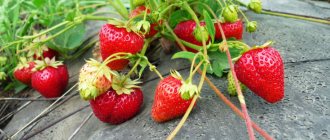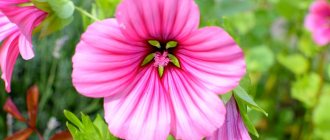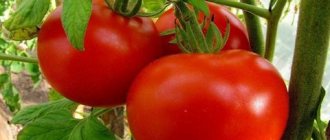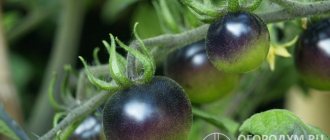Many gardeners are true fans of their hobby. They are constantly looking for new varieties of their favorite plants, ways to plant them, methods to increase productivity and effectively control pests and various diseases. They never pass by new original forms obtained by breeders from ordinary plants. Therefore, they will certainly be interested in climbing strawberries, which can be grown both in the usual way and on hanging and vertical structures.
Long shoots strewn with berries
Characteristics
With proper care, strawberries can produce consistently high yields.
Features and benefits of climbing strawberries:
- buds of peduncles are formed in addition to rosettes also on the mustache;
- vertical beds do not require frequent weeding;
- hanging berries do not touch the soil and do not rot;
- the berries are not accessible to some crawling pests, such as slugs;
- remontant (bearded) varieties predominate.
Climbing bushes with hanging red berries look very beautiful in the garden.
Vertical beds of various structures and flowerpots allow you to grow berries even on a terrace or in an apartment . Cons:
- if care and cultivation do not require special work, then preparation for wintering has a number of rules;
- the vertical arrangement of the beds requires more watering - once every 4 days, while regular strawberries can be watered once a week.
- Climbing strawberry varieties require frequent fertilization.
Flaws
The disadvantages of the curly species are few:
- comparatively more frequent watering due to the size of the plant;
- difficulties in organizing the placement of mustache rosettes on a vertical surface;
- frequent feeding;
- instability to frost - you cannot cover such a bed before snow falls without damaging it;
- ease of falling into fraudulent resources - offers for vines with kilograms of harvest are common.
Best types: 5 varieties
All types of this climbing berry belong to ampelous plants - crops that can grow in hanging pots, flowerpots, and cache-pots. I will describe the most popular varieties and reviews about them:
| Temptation Appearance:
Fruit:
Bears fruit throughout the summer and early autumn. High yields are maintained for up to three years. High-yielding variety. During the season it produces up to 1.5 kg of large berries. Brief characteristics of the variety:
“Temptation not only grows in my dacha, I planted it in my apartment, in pots. Growing strawberries this way turned out to be very simple, due to the fact that the variety is unpretentious and takes root well.” | |
| Fresco Appearance:
Fruit:
It bears fruit for a long time - from June to the end of September. High yield. In the first year - 1 kg of berries per bush per season, in subsequent years - up to 2 kg. Brief characteristics of the variety:
“The variety is absolutely unpretentious to growing conditions and soil type, and adapts perfectly to any climate. Requires standard care for strawberries. Only fertilizing should be more abundant and frequent, since the plants spend a lot of energy on constant fruiting (remontant variety).” | |
| Queen Elizabeth Appearance:
Fruit:
Productivity - up to 2 years. The fruiting period is from the end of May to the end of September. In closed ground it can bear fruit throughout the year. Large harvest - up to 4 kg per season, in protected greenhouse conditions - up to 10 kg. Brief characteristics of the variety:
“I’m growing this variety for the first season. So far I like everything. The bush is powerful, densely leafy. There are no diseases or pests. The learning ability is good. The berry is very large, dense, good taste" | |
| Tarpan Appearance:
Fruit:
Bears fruit from June to October. Productivity is high - the first fruiting is large berries. Ampelous appearance, can be grown in hanging baskets in an apartment. Brief characteristics of the variety:
“Good for preservation. It does not crack either on bushes or in a jar. Quite unpretentious, not painful. The binding in hot weather is good. Fruit until frost. Keeping quality is good" |
Reviews from gardeners
Climbing strawberries could not help but capture the attention of gardeners with their beauty and originality, but judging by the reviews, not everyone was able to grow them the first time.
Anna, 57 years old, Voronezh
Despite my considerable gardening experience (about 20 years), I could not ignore the advertisement for the climbing “miracle strawberry”. Despite the impressive price, I ordered 10 bushes. Of those who came, only two showed signs of life. I nursed them as best I could. By summer they were planted in flowerpots with the best soil, they even bloomed, but after waiting for the berries, I could not contain my disappointment - the taste was mediocre, and the berries of these strawberries themselves were not large at all. Moreover, until the fall I was unable to squeeze anything more out of them, no matter how hard I tried. Of course, there was nothing climbing in the bushes at all - ordinary, unremarkable bushes. And they didn’t survive the winter at all, although I wrapped them better than my own strawberries. In general, I won’t take that risk again.
Olga, 38 years old, Bryansk
I knew for sure that miracles don’t happen, and when a friend persuaded me to buy climbing strawberry seedlings, I didn’t do it. Of course, nothing worked out with her friend - they all died that summer, no matter how hard she tried to look after them. She didn't even wait for the berries. I’ve been growing the remontant garden strawberry Elizaveta 2 for several years now, so I decided to experiment with it. Last summer I planted about 20 runners and by the first frost I had grown good, strong seedlings. For the winter I put it on a glassed-in balcony and watered it occasionally. It is quite cold there in winter, but the temperature drops below zero only in severe frosts. The plants survived the winter well and began to produce new leaves in March. Then I planted them in several large hanging baskets (5 pieces each) and fed them. In the spring, it was already quite warm and light on the glassed-in balcony, and the strawberries began to grow. Flower stalks appeared in mid-April, and in May we already tasted the first berries. Of course, this strawberry does not curl at all, but simply produces long mustaches with rosettes, on which flowers also appear first, and then berries. But it also turns out very beautiful.
Strawberry care: 5 rules
Climbing strawberry is not a particularly picky berry. But without following certain rules, you will not get a good harvest:
| Rule 1. Watering Young seedlings need frequent watering:
A convenient method of constant water replenishment in small portions is drip irrigation. To prevent the soil from drying out quickly, it needs to be mulched after watering. | |
| Rule 2. Feeding Remontant climbing garden strawberries (strawberries) constantly bear fruit. She needs a lot of nutrients to maintain her strength. It is necessary to replenish microelements in the soil by regularly applying fertilizers:
Fertilizers are applied at the root after watering once a week. | |
| Rule 3. Trimming mustaches and peduncles Cut off all flower stalks of first-year seedlings. The plant will devote strength to the formation of roots, and prepare for fruiting next year. For mature bushes, leave no more than 5 flower stalks. After the last harvest, cut off all the leaves; this procedure will renew the berry bush. | |
| Rule 4. Pest and disease control Climbing strawberries are not so susceptible to attack by insects and animals, since they are not on the ground. The berry can be “attacked” by:
Attention! For preventive purposes, irrigate the soil with copper sulfate in spring and autumn. | |
| Rule 5. Protection in winter Preparation for winter is carried out in several ways. Method 1:
Method 2:
Method 3:
|
Important! Weeding and loosening are not the main thing in caring for strawberries of hanging varieties, but it is necessary to remove emerging weeds. At the same time, fluff up the compacted soil to give oxygen access to the roots. Carry out actions after watering.
Productivity
The yield of climbing strawberries depends entirely on several factors:
- Variety: Queen Elizabeth produces about two kilograms of berries from a large bush over the entire season, Queen Elizabeth II - about 8-9 kilograms per square meter of plantings, Alba - up to two kilograms from one bush, Homemade delicacy - 1.5-2 kilograms.
- Care: a watering schedule must be drawn up, which must be adjusted in dry or wet weather, fertilizing must also be carried out systematically, as well as loosening the soil, cutting off dried leaves or excess tendrils is necessary so that the plant does not waste unnecessary energy, especially during the growth period.
- Treatment: prevention - there are a lot of remedies, including folk ones, that can be used to protect bushes; awareness of common diseases and timely treatment will save not only the infected plant, but also neighboring healthy ones.
Reproduction: 2 ways
| Method 1. Reproduction by mustache To produce young trees, strong bushes with good fruiting are used:
| |
Method 2. Reproduction by rosettes
|
What diseases are you susceptible to?
Strawberries, like any living organism, are susceptible to many diseases. The most common of them:
- ordinary spotting - can appear in different parts of the leaves and affect small areas;
- powdery mildew is a severe fungal disease that affects leaves, flowers and shoots with a white coating, disrupting the growth of fruits and killing the plant, drying it out;
- Strawberry mite - affects leaves and flowers, the strawberry bush quickly dries out, producing less and less fruit until it dies completely.
To combat diseases, both chemicals and biological substances, as well as folk remedies, are used.
Remember
- Select good seedlings. When choosing planting material, do not skimp. It is better to buy strong seedlings that can take root well. Discard dry, wilted seedlings - these are diseased plants.
- For propagation, take tendrils from plants that are 2–3 years old. Old bushes are not capable of producing good planting material.
- Renew the beds. Replace 3-4 year old strawberry bushes with young plantings to get a bountiful harvest.
- Know how to reproduce. There are two ways to get new strawberry seedlings - by separating rosettes and tendrils.
Transfer
An important point when growing strawberries is their replanting, which is carried out every 4 years.
In the spring, 1-2 of the strongest tendrils are plucked off from the most “lush” flowering plants and transplanted to a new plot or another vertical bed.
When transplanting, the following points should be considered:
- the core of the bush cannot be covered with earth;
- After planting the plant, it is recommended to mulch the area around it with grass or sprinkle it with grass; this procedure will help the soil retain moisture longer;
- Two weeks after transplanting, the strawberry bushes should be fertilized.
Plant pruning
In order for climbing strawberries to produce a reliable harvest and maintain their decorative appearance, they must be trimmed on time and correctly.:
- from plants in the first year of life . This procedure will help the bushes take root and accumulate strength for fruiting for the next season;
- In adult plants, the number of tendrils is normalized; there should be no more than 5;
- After fruiting is completed , the bushes are rejuvenated by removing all the foliage.
Planting schemes
- One-liner.
Similar to the previous one, with the exception that instead of two lines in the row there is one. Each line must end with two bushes. The optimal scheme for small areas and first planting. - Three-line.
This time the row contains three lines. Suitable for large areas.
rules
- looking at the area, imagine where the lines will go;
- Place stakes at the beginnings and ends of the presented lines (one, two or three, depending on the chosen pattern);
- stretch ropes (cords, etc.) between the stakes, preferably in light shades;
- Mark the places of future bushes on the stretched ropes with a marker.
How to grow
Plant seeds quickly lose their ability to germinate
The crop can be grown from seeds or tendrils, but experienced gardeners advise choosing the first option. It allows you to get strong young plants in a short time - when propagating bushes with the help of tendrils, there is a danger of transmitting diseases that affected the mother plant.
How to plant seeds
Climbing strawberries are suitable for growing as a houseplant
The optimal period for propagating ampelous strawberries by seeds is January or the first half of February. The most important condition for growing plant seedlings is fertile, loose and well-ventilated soil, otherwise problems will arise with growing bushes. In addition, it should be remembered that the seeds of ampel varieties of strawberries lose their ability to germinate quite quickly, so it is better to sow them immediately after purchase. Most often, a fertile mixture of the following types of soil is used for this:
- two parts of peat;
- four parts of turf land;
- one part of well-washed or tempered river sand.
You can plant the seeds in a special peat substrate, which is mixed with fine coconut fiber and sprinkled with river sand on top.
Table 2. Step-by-step instructions for growing climbing strawberries from seeds
| Step, no. | Description |
| Step 1 | The soil is poured into containers and the seeds are distributed over the surface (there is no need to bury or sprinkle them), after which they are covered with glass or film and taken to a well-lit, fairly warm place (temperature about 25 degrees). When planting hanging strawberries, some gardeners use the following trick - the surface of the prepared soil is sprinkled with snow, and the seeds are distributed on top. After the snow melts, the moistened seeds themselves will be drawn into the soil. |
| Step 2 | Plantings should be regularly ventilated, opening them slightly for 5-10 minutes - as a rule, seeds begin to germinate a week after planting, but sometimes the process drags on for 15-20 days. |
| Step 3 | After the first shoots appear, the containers should be moved to a well-lit area - the duration of daylight should be at least 12 hours. The seedlings are watered every day, very moderately - for this it is better to take a pipette or syringe. Excessive humidity can lead to the death of seedlings and the development of a disease called blackleg. |
| Step 4 | The shelter is completely removed only when two full-fledged leaves appear on the seedlings, and to prevent the seedlings from stretching out too much, the air temperature in the place where the containers with seedlings are located must be reduced by 6-8 degrees, that is, to about 18. |
| Step 5 | Seedlings are planted (planted in separate containers) approximately 4 weeks after the first shoots appear. During this period, at least 3 full-sized small leaves should already appear on the bushes. This will help the seedlings get stronger before being planted in a permanent place. |
Attention! Seedlings of ampelous strawberries can be bought ready-made - in this case you do not have to waste time growing them, but you need to be very careful when choosing young plants so as not to get sick or weak shoots that will not grow normally.
Peat prices
peat
Planting in decorative containers
Seedlings of ampelous strawberries are very fragile
The optimal period for planting plant seedlings is the second half of spring or the last month of summer. To plant seedlings of ampelous strawberries, it is better to choose small containers 25-30 cm deep with holes to prevent the accumulation of liquid. To grow bushes on the balcony, you can choose special cassettes or other containers and form them into arches and other compositions.
A drainage layer (expanded clay, river pebbles, crushed brick, etc.) must be poured onto the bottom of the container intended for replanting young bushes, and a fertile mixture on top. You can use the same substrate as for germinating seeds, or take peat, turf soil and sand - the proportions are 6:3:1.
A soil mixture for growing crops indoors can be purchased at the store.
In addition, you can add a little special substance called hydrogel to it - it will not allow the plant to dry out, and at the same time it will absorb excess moisture. Transfer the seedling to the ground without deepening it too much and without compacting the soil - it should be dug in a little and watered well. When replanting, you need to be careful, since the root system of seedlings is very fragile, and there is a high risk of damaging the plant.
Important! If you choose the wrong soil for growing ampelous strawberries, they will lose their decorative and fruitful characteristics - this crop grows very poorly on poor soils.
Prices for peat pots
peat pots
Growing technologies
There are several options for cultivating climbing strawberries. The choice of method depends on the size of the plot, the characteristics of the variety and personal preferences.
The easiest way to grow is to plant bushes in hanging pots or cache-pots, but with this arrangement it is difficult to achieve high yields. If you need to increase the volume of the bushes, the air growing method or installing a support is suitable.
Vertical bed (air method)
This requires a well-lit place, protected from drafts. The optimal height of the structure is 2 m. There are several construction methods:
- using a plastic pipe 3 to 4 m long. Holes are made in it, installed vertically or horizontally, and secured. It is easy to move the bed to a new place and put it indoors for the winter;
- pyramid of boxes. Suitable materials include wood, plastic or metal structures. 3-4 containers are placed on top of each other and filled with soil;
- To create a vertical bed, a regular metal or plastic barrel is suitable. Holes are made in it for bushes, and the entire volume is filled with substrate;
- Hanging bags made of thick film or agrofibre are the optimal method for growing climbing strawberries indoors. You can plant up to two plants in each container.
On sale you can find ready-made structures for forming hanging beds. This simplifies the work process; you just need to fill the container with soil and plant the mustache.
One of the easiest methods for growing climbing strawberries. Bushes are planted in the traditional way in a garden bed, then a small support is installed next to each bush. This can be a lattice up to 1 m high, a fence or a dense mesh.
Peduncles and tendrils are passed through the cells and tied up. As a result, the plant begins to form shoots in a vertical direction.
The algorithm for planting climbing strawberry bushes is practically no different from the traditional method of growing this crop, but there are some differences.
When using grown seedlings or tendrils, it is recommended to carry out work from mid-April to May, depending on the climate in the region and the specifics of the variety.
Selection of soil and planting material
When choosing strawberry seedlings, you should pay attention to the appearance of the bush. The leaves should have a uniform green color without signs of disease or yellowing
When opened, the roots are white in color, without deformations or dry areas. When using peat pots, you may notice how the roots poke through the material a little.
Planting climbing varieties requires fertile soil with neutral acidity.
Both a store-bought composition and a self-prepared substrate are suitable. To make it, you can mix turf soil, river sand and peat in a ratio of 3:2:2. After this, the soil must be treated with a 1% solution of potassium permanganate or steam to prevent diseases.
Landing algorithm
Before starting work, you should prepare the soil, seedlings and planting site. Most often, climbing strawberries are grown in containers or hanging beds, which is an essential planting process. Step-by-step algorithm:
Place a layer of drainage up to 5 cm thick at the bottom of the container. Fill the container with prepared soil. Moisten the surface of the earth with warm water. Make holes for plants up to 7 cm deep. Add a handful of wood ash
The interval between plants in a common container is 10-15 cm. Carefully place the grown bush in the hole, straighten the roots. Sprinkle with soil so that the root collar is flush with the surface. Compact the soil
Water the planting generously with water and mulch with sawdust or wood chips in a thin layer of up to 5 cm.
After planting the planting material, containers with strawberries should be placed in a well-lit place. The first feeding is carried out after 1-2 weeks.
Preparing for winter
Vertical beds must be moved indoors for the winter. If this is not possible, then the containers with the planted plants are buried in soil and covered with spruce branches or hay.
If the vertical beds are low, you can make a special protective structure from wooden slats, burlap, roofing felt, lutrasil or agril. It is recommended to insulate the soil around the bed with organic mulch (seed peels, rotted sawdust) - this will not only protect the plant bushes from freezing, but also protect the crop from weeds.
Ampel strawberry (strawberry) is a type of berry that many summer residents grow on their plots. The plant is becoming increasingly popular and competes with other varieties. The culture has its own specifics in cultivation and care.
Curly strawberries are real, beautiful, tasty and healthy!











